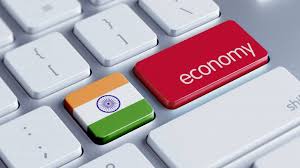W.B.C.S. Examination Notes On – Economic Effects Of Tariffs And Quotas – Economics Notes.
Governments intervene in international trade for various reasons—economic and non-economic. Such intervention goes by the name protectionism. In fact, protectionism refers to any interference with free trade by the government of a country.Continue Reading W.B.C.S. Examination Notes On – Economic Effects Of Tariffs And Quotas – Economics Notes.
Government control may be two forms – import control and export promotion. In general the stress is on those methods of trade control (or instruments of trade policy) which seek to restrict imports. These are known as barriers to trade.
Two major tools or instruments of trade (import) control are tariffs and quotas. A tariff is a tax on imported goods. The tariff can be specific (based on weight, volume, or number of units, e.g. Rs. 10 a kg. Rs. 500 a dozen or ad valorem (a percentage of the price).
The average Indian tariff is now less than 5%, but many items bear no tariff at all, while a few items attract substantial tariff. A quota is a quantity limit. It specifies the maximum amount that can be imported during a given time period (usually a year).
Quotas can be global (e.g., total imports of widgets from all foreign suppliers cannot exceed 1,000 widgets per year) or geographic (assigning quotas to particular countries). Quotas also can be combined with tariffs in a tariff- quota. In this case, a certain amount of a good from one country is allowed to enter another country without a tariff. For amounts in excess of that limit a tariff is imposed.
A tariff will tend to raise price, lower the amounts consumed and imported, and raise domestic production. A tariff lowers imports and consumption, raises domestic production and price. Starting from the free- trade equilibrium in India now puts Rs. 2 tariff on clothing imports. The price of imported clothing to Rs. 6 (including the tariff).
The market price rises from Rs. 6, so the total amount demanded falls. Imports fall from 200 units to 100 units, while domestic production rises from 100 to 150 units.
Quotas:
Quotas have the same qualitative effect as tariffs. A prohibitive quota (one that stops imports altogether) would achieve the same result as a prohibitive tariff. The price and quantity would move back to the no-trade equilibrium at N in Fig. 1. A less stringent quota might limit imports to 100 clothing units; this quota would equal the heavy line HJ in Fig. 1. A quota of 100 units would lead to the same equilibrium price and output as did Rs.2 tariff.
Although there is no essential difference between tariffs and quotas, some subtle differences to exist.
A tariff gives revenue to the government. A quota, on the other hand puts the profit from the resulting price difference into the pocket of the importers licence holders. Because of these differences, economists generally regard tariffs as the lesser evil.
Please subscribe here to get all future updates on this post/page/category/website


 +919674493673
+919674493673  mailus@wbcsmadeeasy.in
mailus@wbcsmadeeasy.in







































































































